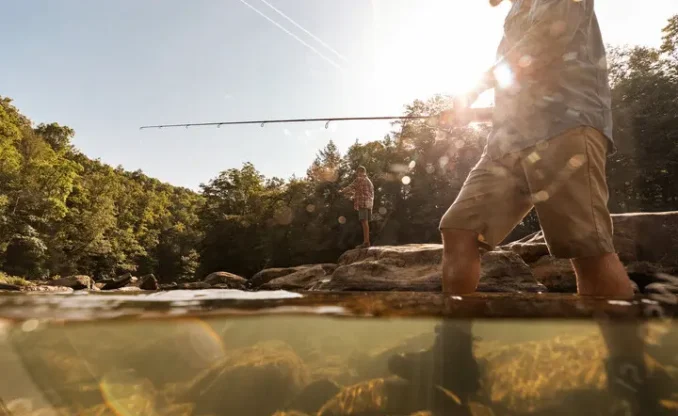Squaw Huckleberry, Buckberry or deerberry – Vaccinum stamineum
Sourtop (Velvetleaf) Blueberry – V. myrilloides
Late Low (Early Sweet) Blueberry – V. vacillans
Early Low (Lowbush) Blueberry – V. angustifolium
Upland Low (Pale) Blueberry – V. pallidum
Highbush (Swamp) Blueberry – V. corymbosum
Form
Blueberries in general: Leaves are alternate, simple small elliptic, deciduous or persistent. Twigs are slender, reddish or greenish, covered with many raised warts and often zigzag. Flowers bloom in spring or early summer and are small greenish-white or pinkish. Fruits are edible, often blue or blue-black and contain many small seeds.
Twigs and Bark
Squaw Huckleberry-Much branched shrub to 5 feet tall with hairy twigs.
Sourtop-Dense, flat-topped shrub to 3 feet tall, crowded branches that are very hairy.
Late Low-Open shrub to 3 feet tall, forming colonies.
Early Low-Open shrub to 2 feet tall, forming dense extensive colonies.
Upland Low-Open, straggling shrub to 2 feet tall, twigs are smooth.
Highbush-Tall shrub of variable appearance, often flat-topped, to 12 feet tall (usually 6 to 8 feet).
Leaves
Squaw Huckleberry- 1 to 3 inches long, slightly hairy or smooth, whitened beneath.
Sourtop-3/4 to 1 ½ inches long, smooth margin, velvety above and beneath.
Late Low- ½ to 2 inches long, dull green above and whitish beneath, older leaves often leathery.
Early Low- ½ to 1 ½ inches long, sometimes pale or hairy beneath (usually smooth), small teeth on margin, narrowly elliptic.
Upland Low – 1 ½ to 2 inches long, green beneath, small teeth on margin, veiny pattern.
Highbush – 1 ½ to 3 inches long, green and hairy beneath (sometimes pale beneath).
Fruit
Squaw Huckleberry – Green or yellow, juicy, sour and tough skinned, June-July.
Sourtop-Blue, sour but good flavor, July-August.
Late Low-Blue, sweet, June-July.
Early Low-Bright blue, excellent flavor, June-July.
Upland Low-Dark blue or black, July.
Highbush-Blue to black, covered with whitish powder, sweet, July-August.
Natural Habitat
Squaw Huckleberry-Dry woods, thickets, clearings and old fields.
Sourtop-Swamps or moist woods and clearings, frequent on high open mountaintops.
Late Low-Dry, open woods and heath barrens at higher elevation.
Early Low-Dry open rocky or sandy soil, common on heath barrens at higher elevation.
Upland Low-Dry upland woods and thickets, uncommon in WV.
Highbush-Swampy and glady low woods, riverbanks and dry uplands.
Horticulture
Squaw Huckleberry and Highbush Blueberry useful as specimen, borders, or ground plantings. Other Blueberries used as ground covers.
Light:
Full sunlight.
Soil Moisture:
Moist to dry with Sourtop and Highbush preferring moist to wet, well-drained soils.
Soil pH:
Very acid to moderately acid.
Problems:
Blueberries are attacked by several insects and diseases, but a regular spray program will easily control any problems. Chlorosis (yellowing of leaves) is common if the soil is not sufficiently acidic.
Wildlife Uses
Blueberry fruits are very important food for grouse, bobwhite, turkey, mourning dove and numerous songbirds such as thrushes, bluebird and scarlet tanger. Animals such as black bear, foxes, rabbit, skunk, fox squirrel and chipmunk readily eat fruit, twigs and leaves of blueberries. Deer will eat the fruits and browse twigs and leaves.
The dense colonies of low blueberries provide shelter and nest sites for many smaller mammals and birds such as grouse, junco, rabbit and chipmunks. Blueberries are overall very important for food and cover for wildlife.
Compiled By: Linnie Coon, outdoor writer and naturalist, Comfort, West Virginia
Written by West Virginia Native Plant Society members and jointly published with the WV Wildlife Diversity Program



